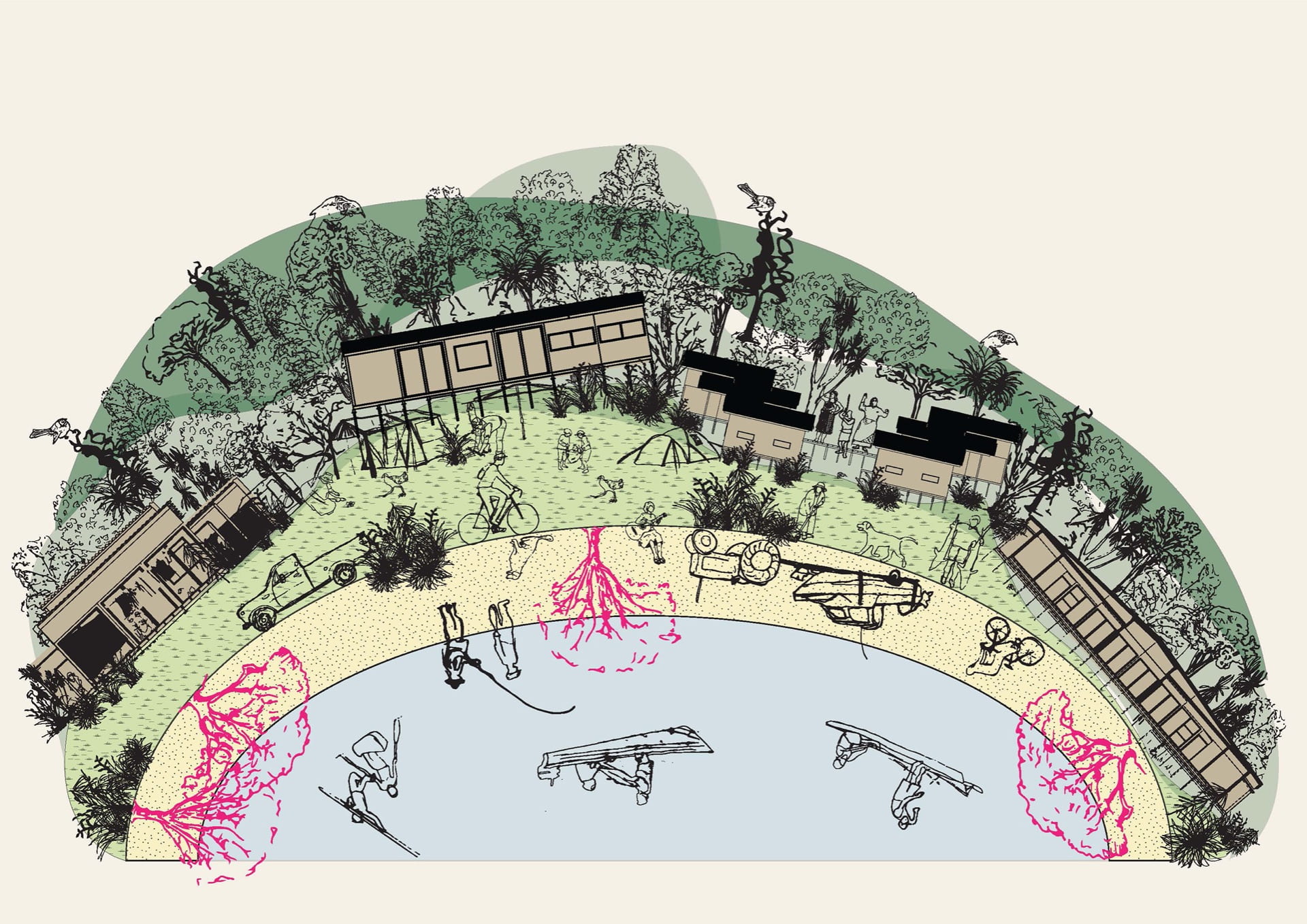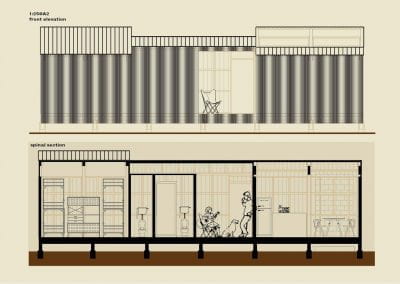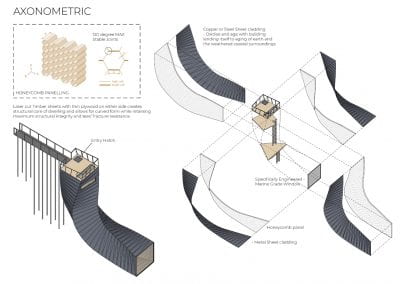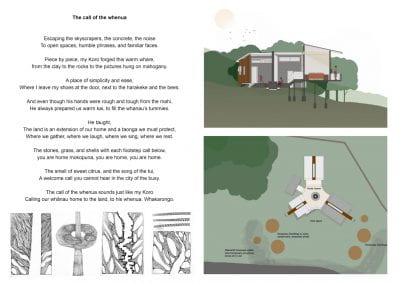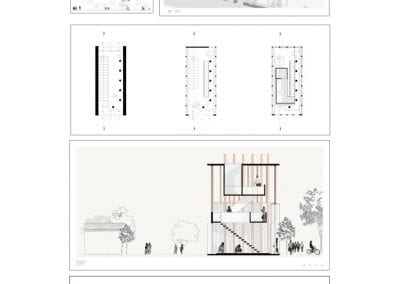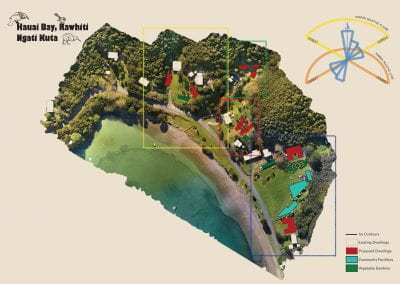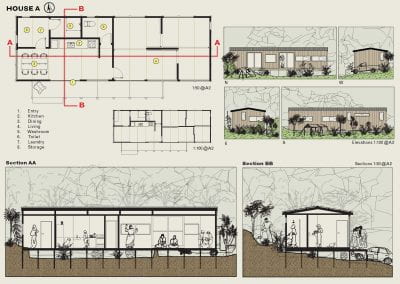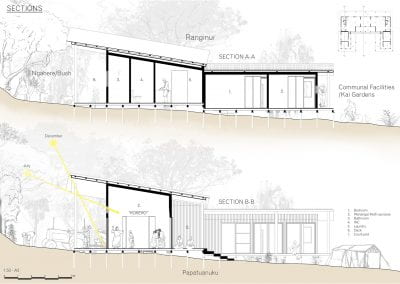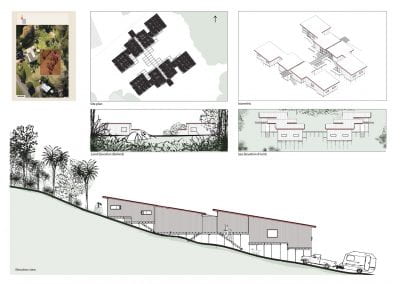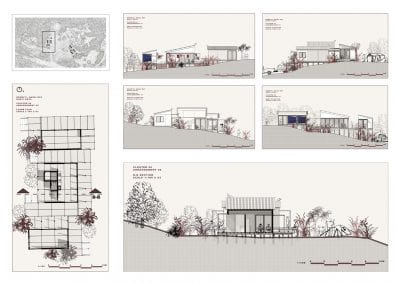Mark Meyers, Mya Dixon, William Pengelly, Miro Sumich.
Tutor: Pip Newman.
To grasp an understanding of Te Ao Māori we look towards the creation story. Specifically the moment Tāne-nui-a-Rangi obtained ‘Te Kete o te Wānanga’ and also the Māori lunar calendar, Maramataka which Māori utilise in relation to their living situations.
Through kōrero and oral storytelling, inter-cultural and generational knowledge weaves connections home to the people, land and spirit. An eternal source of spirituality, a connection to everything – a tie that binds us all. Interweaving strands of individuals with the weight of their tīpuna entails better relations and understanding of Aotearoa.
Establishing a built environment that responds with notions of Te Ao Māori and kōrero. Creating a space that reflects our understanding of Maramataka and the knowledge of the land through a lineage of storytelling. A gathering place for generations of families to allow a pilgrimage for cultural education.
The library as we know is what makes knowledge and defines it. An institutional centre of power where knowledge is recorded and recognised an apex of power. Instead of desks, books, computers we turn to indigenous, Māori methods of passing of knowledge. A cultural expression through that help define indigenous peoples through participation, performance, activity and festival, song, food, spoken language, dance. Wānanga and cultural education, an intergenerational education allows a maintenance of belonging and a sense of identity.
We reflect on a story one kaumātua had shared, regarding how kūmara arrived in Aotearoa. Where during a meeting each representative shared a different story to those beside them. Perceiving this as an element of Māori culture we reflect on our individual tūrangawaewae and whakapapa. As only through an understanding our own socio-cultural backgrounds we can start to understand one another.
